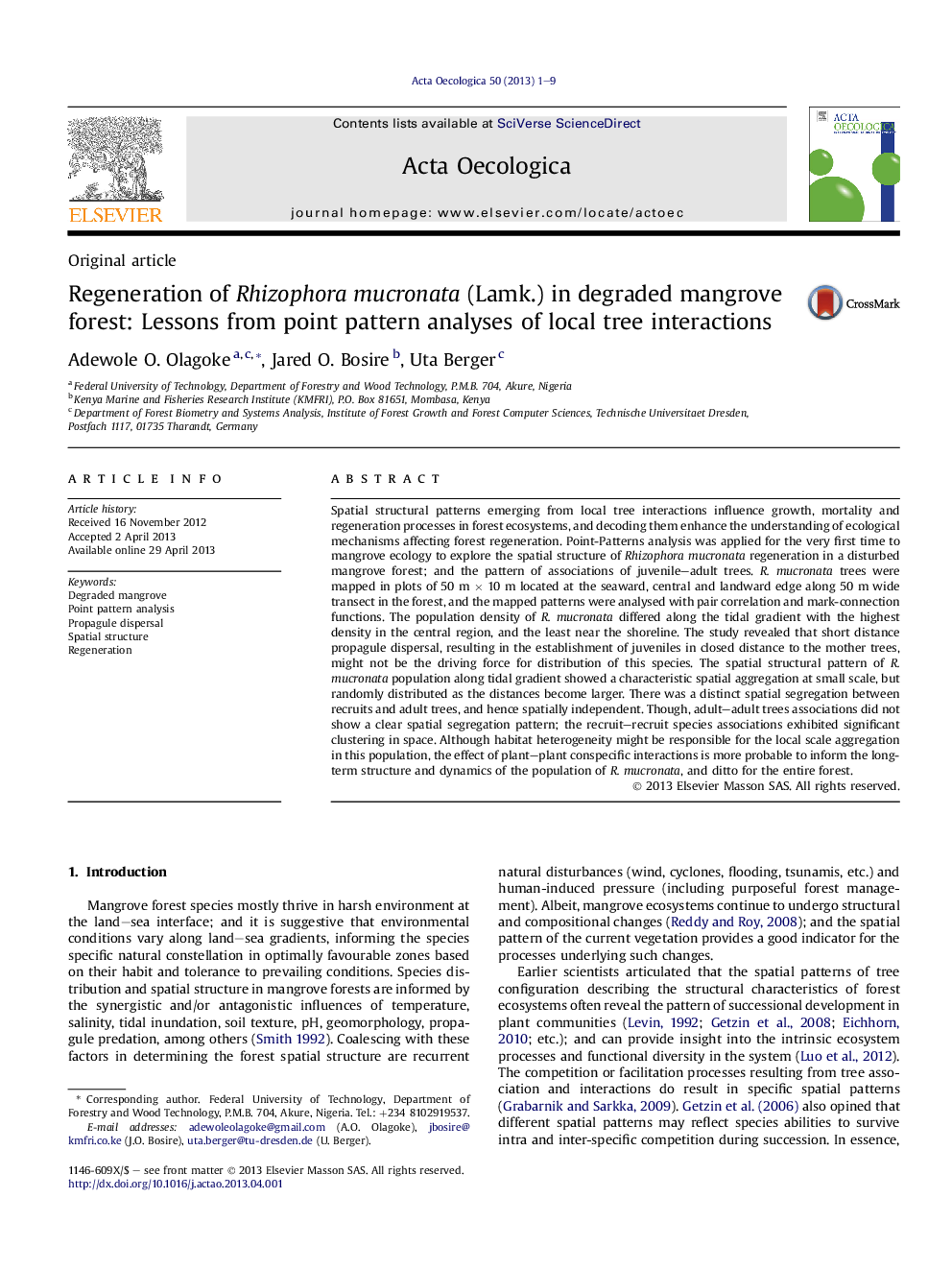| Article ID | Journal | Published Year | Pages | File Type |
|---|---|---|---|---|
| 4380826 | Acta Oecologica | 2013 | 9 Pages |
•Point patterns analyses of Rhizophora mucronata in three zones along the tidal gradient.•The distribution of R. mucronata regeneration markedly varied among zones.•General local scale clustering; changing to random pattern at a larger scale.•Recruits and adult trees are spatially segregated in the population of R. mucronata.•Plant–plant conspecific is probable to form the long-term population structure.
Spatial structural patterns emerging from local tree interactions influence growth, mortality and regeneration processes in forest ecosystems, and decoding them enhance the understanding of ecological mechanisms affecting forest regeneration. Point-Patterns analysis was applied for the very first time to mangrove ecology to explore the spatial structure of Rhizophora mucronata regeneration in a disturbed mangrove forest; and the pattern of associations of juvenile–adult trees. R. mucronata trees were mapped in plots of 50 m × 10 m located at the seaward, central and landward edge along 50 m wide transect in the forest, and the mapped patterns were analysed with pair correlation and mark-connection functions. The population density of R. mucronata differed along the tidal gradient with the highest density in the central region, and the least near the shoreline. The study revealed that short distance propagule dispersal, resulting in the establishment of juveniles in closed distance to the mother trees, might not be the driving force for distribution of this species. The spatial structural pattern of R. mucronata population along tidal gradient showed a characteristic spatial aggregation at small scale, but randomly distributed as the distances become larger. There was a distinct spatial segregation between recruits and adult trees, and hence spatially independent. Though, adult–adult trees associations did not show a clear spatial segregation pattern; the recruit–recruit species associations exhibited significant clustering in space. Although habitat heterogeneity might be responsible for the local scale aggregation in this population, the effect of plant–plant conspecific interactions is more probable to inform the long-term structure and dynamics of the population of R. mucronata, and ditto for the entire forest.
